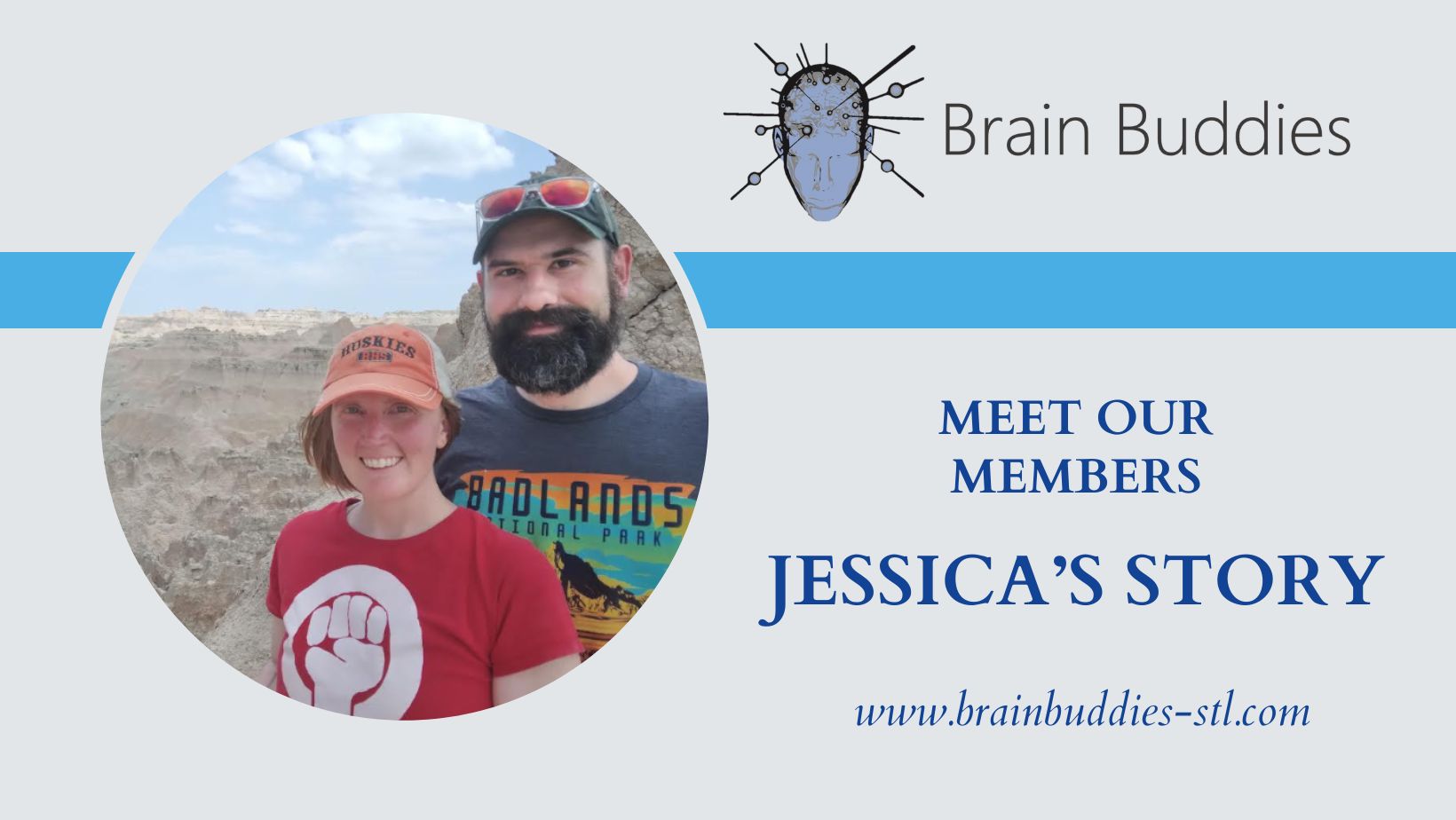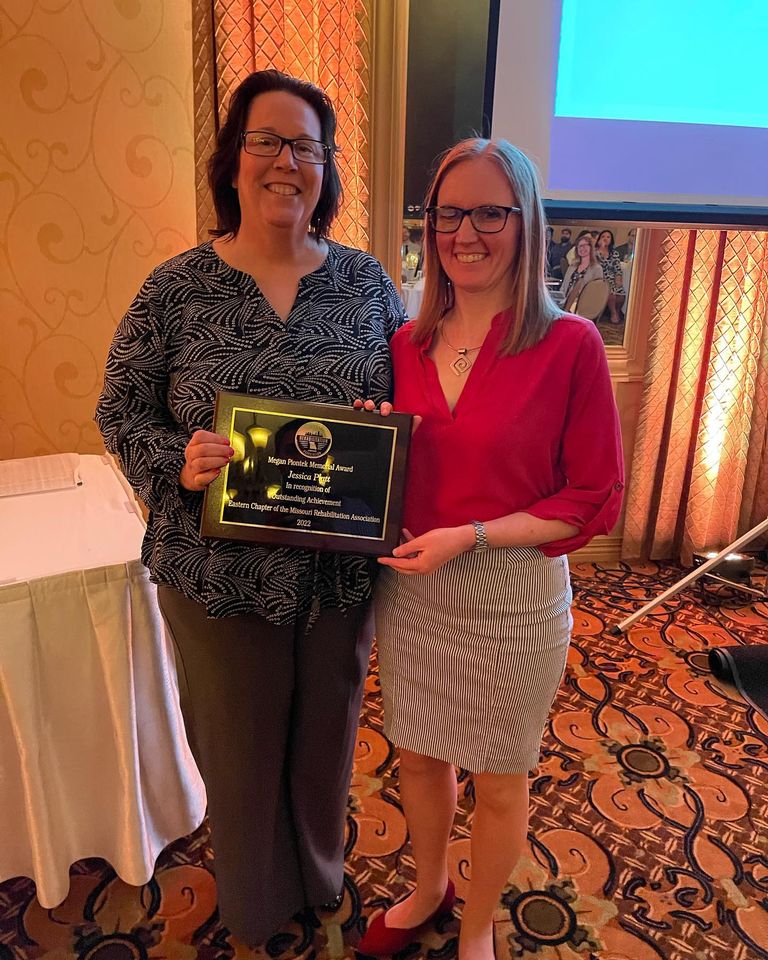
Q: In a few paragraphs, tell me your/your family’s story.
My brain injury happened when I was a senior at Knox College in Galesburg, IL, a college roughly three and a half hours away from my home in St. Louis, MO. That was back in March of 2008. I woke up in the middle of the night with a searing headache. My boyfriend at the time got up to get me medicine and when he came back, I was having a seizure. He called for an ambulance and they rushed me to the local ER. When I made it to the hospital in Galesburg, they completed CT and MRI scans of my head and they (correctly) realized that they did not have the correct equipment for me at their hospital. They sent me to Peoria, IL, which was roughly 50 minutes from Galesburg. Once there, they took more CT and MRI scans and diagnosed (correctly) that I had an Arteriovenous malformations (AVMs) in my head that was rupturing. The problem was that it was too close to my brain stem for them to attempt surgery. Instead, they input a shunt into my brain to drain the excess fluid from my brain and relieve the pressure. When they felt I was stable, they sent me home, with the intention to finish out my classes. Instead, I had another seizure and I was rushed to St. Louis University Hospital, where a top neurosurgery team was. They took more scans and the neurosurgeon said that he thought he could get it. It took three surgeries for him to complete the embolization of the AVM. During the second surgery, there was a complication, because I stopped talking. That was the first of several hurdles that I faced post-brain surgery.
It took a long time to get where I am, now. I actually do not remember most of what I said in the top paragraph. I can tell you all of that because I have heard it summed up so many times by my mom. I graduated from Knox on time because my professors that final trimester graded me on a pass/fail system. I was still in the hospital when I should have walked at graduation. So I had my own graduation. The dean of the college, my academic advisor, and some of the librarians (I worked at the library) came to St. Louis and held a ceremony for me at my church. I volunteered at my church while I improved my speaking. A year later, I went to graduate school, which I did fine in, but not knowing what I wanted to do made me decide that wasn’t the right time. I took a job as an Activity Coordinator at Wentworth Military Academy in Lexington, MO. I did that for a year before I came home to St. Louis. I worked for Special School District for three years as a paraprofessional/teacher’s assistant at Ritenour High School. I went to work at an alternative school. I worked as a job coach for three years. When I finally decided on master’s degree, I worked as an Activity Specialist while I took classes. My senior year, I was working 10 hour shifts Friday, Saturday, Sunday, and Monday while I completed my 20 hours/week internship and went to class. I would say “It was hell,” but I don’t, because I have been through worse. I ran a half marathon. I have published a book, which is available as an audiobook because it was very important to me that it was, since I have had a brain injury.


The most apparent thing I experienced post-surgery was the fact that I stopped talking. And when I did talk, I said the incorrect word. I learned later that this is called aphasia, and the kind I experience is called expressive aphasia. My experience with this incredibly annoying symptom is that it taught me real quick which people would wait for me to say the correct word and who wouldn’t. I have spent the past sixteen years in the not-for-profit work sector and I try to lead by example and give individuals with disabilities time to express themselves. My loss of vision, which was affected by the second brain surgery, has made it so that I no longer feel responsible driving. The other things that I still deal with is that I still get seizures. Even though I have not experienced a tonic clonic seizure (the ones when I curl up and shake), it turns out there are a lot of different ways you can experience a seizure. The other kind that I have are partial complex seizures, and those are much harder to catch. They happen much more frequently as we have not figured out a medication that will stop them completely.
Q: How did you learn about Brain Buddies?
I learned about Brain Buddies through another member, Megan, who I met through a brain injury support group, in 2017. The first time I went, it was a much smaller group, only six or so other members.
Q: How has Brain Buddies impacted your life/your family’s life?
The biggest way that Brain Buddies has impacted my life is it has given me a community where I don’t have to react to the attention (either positive or negative) that I get when I have to disclose my seizure disorder or my brain injury. I can just be me and that is something that I do not get a lot. It has introduced me to people, all with a different story to share. I do my best to remember what it felt like when I could not speak and people would talk for me, assuming they knew what I wanted to say. Brain Buddies members don’t tend to that. And I like that about them.
